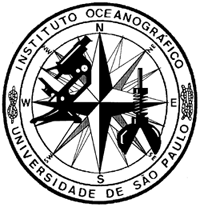Results from depth integrated and vertically stratified plankton samples collected in the southeastern Brazilian Bight were used to study the feeding behavior of Brazilian sardine (Sardinella brasiliensis) larvae. Sampling of the ichthyoplankton was carried out with 60 cm Bongo nets in the Bight during the spawning seasons of 1991/92 and 1992/93. The sampling of microzooplankton was carried out in the coastal region off Ubatuba, using the closing-type plankton net, in December 1995. The feeding study was based on a total of 901 captured larvae. Gut content analysis of the sardine larvae showed a diurnal pattern of food intake. Copepod nauplii dominated the diet of the preflexion and flexion larvae, but they were the second in abundance for the postflexion larvae which fed preferentially on copepodites and adults of Oncaea spp. Averaged feeding incidence of the 901 larvae was 37.6%, but it increased to 58.5% for day-caught larvae. Seventy percent of the food particles were found in the mid-gut and food eaten showed a natural increase in digestion from fore-gut to hind-gut. Vertical distribution of microzooplankton revealed that copepod nauplii were present in densities of 10-20 ind. L-1, mainly in the upper mixed layer (0-20 m depth), but higher densities of copepodite and adult of Oncaea, Oithona and Paracalamis were found within and beneath the thermocline. These results show that Brazilian sardine larvae can successfully adapt their diet, feeding on the most abundant food particles in the upper mixed layer of the survey area.
Sardinella; Microzooplankton; Larval feeding; Ichthyoplankton; Southeast Brazil











